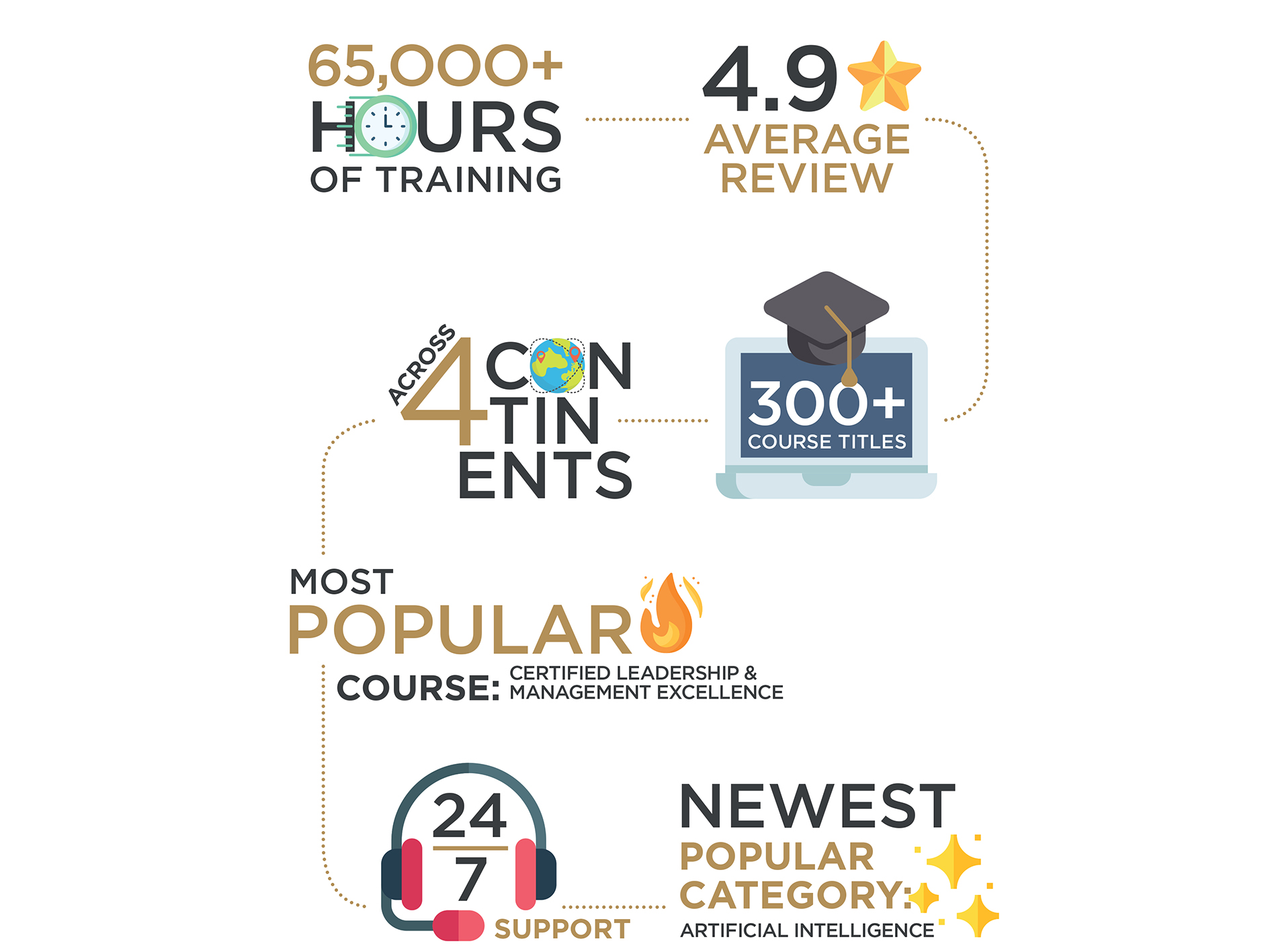The role of logistics has been fundamentally transformed in the dynamic landscape of procurement and supply chain management. The interplay of globalisation, the surge in e-commerce, and rapid technological advancements has redefined how goods move from producers to consumers. Let's explore the key factors driving this evolution and how logistics fundamentals adapt to meet new challenges.
The Impact of Globalisation, E-commerce and Technology on the Supply Chain
-
Globalisation has expanded markets and increased competition, pushing companies to optimise their supply chains. This expansion requires efficient logistics networks to handle the complexities of international trade, including diverse regulations, longer distances and varied transportation modes.
-
E-commerce has revolutionised consumer expectations, emphasising speed, reliability and convenience. The rise of online shopping has led to increased demand for last-mile delivery solutions, pushing logistics providers to innovate and improve efficiency. Companies now face the challenge of managing high volumes of small, individualised shipments while maintaining profitability.
-
Technological advancements are at the heart of modern logistics evolution. Innovations like the Internet of Things (IoT), artificial intelligence (A.I.) and blockchain technology have streamlined operations and enhanced transparency. IoT devices enable real-time tracking of goods, A.I. optimises route planning and inventory management and blockchain ensures secure and transparent transactions. These technologies can streamline processes, improve efficiency and reduce costs.
Logistics Fundamentals: Core Concepts
Regardless of these ongoing changes, there are core concepts that every logistics professional needs to understand:
-
Transportation: Efficient transportation is crucial for minimising costs and meeting delivery timelines. This includes selecting the best modes (air, sea, road or rail) and optimising routes to reduce transit times and fuel consumption.
-
Warehousing: Modern warehouses are more than just storage spaces. They are automated, technology-driven hubs that manage inventory, streamline picking and packing processes and facilitate fast order fulfilment.
-
Inventory Management: Maintaining the right balance of inventory is critical. Advanced inventory management systems use data analytics to forecast demand, reducing stockouts and overstock situations, thereby optimising working capital.
-
Packaging and Handling: Logistics encompasses packaging, material handling, and distribution network design. Effective packaging protects goods during transit, while proper material handling ensures safe and efficient movement within facilities. A well-designed distribution network enhances overall supply chain agility.
Logistics Costs and Performance Measurement
Managing logistics costs is vital for maintaining a competitive edge. Key cost components include transportation, warehousing, labour and technology investments. Companies need to adopt cost-effective strategies such as consolidating shipments, leveraging economies of scale and implementing energy-efficient practices.
Performance measurement is equally important. Key performance indicators (KPIs) like delivery accuracy, order fulfilment speed and transportation costs per unit are essential for evaluating logistics efficiency. Advanced analytics tools provide real-time insights, enabling continuous improvement.
The Post-Pandemic Landscape
The COVID-19 pandemic exposed vulnerabilities in global supply chains, leading to disruptions and shortages. However, it also accelerated the adoption of new technologies and innovative solutions. Here are some key trends:
-
Surge in E-commerce: E-commerce sales saw unprecedented growth during the pandemic. In the U.S. alone, e-commerce grew by 44% in 2020, highlighting the need for robust logistics systems to handle increased volumes.
-
Shift to Local Sourcing: Disruptions in global supply chains prompted many companies to reconsider their sourcing strategies. There's a growing trend towards local and regional sourcing to reduce dependency on distant suppliers and enhance supply chain resilience.
-
Increased Technology Adoption: The pandemic accelerated the adoption of digital technologies. According to McKinsey, 85% of supply chain professionals plan to increase digital transformation investments post-pandemic, focusing on automation, A.I. and advanced analytics.
-
Focus on Sustainability: Environmental concerns are reshaping logistics strategies. Companies are investing in green logistics solutions, such as electric vehicles and sustainable packaging, to reduce their carbon footprint.
Understanding and adapting to these changes is crucial for businesses to thrive in a competitive market. By focusing on core logistics concepts, managing costs effectively and leveraging technology, companies can build resilient and efficient supply chains that meet the demands of the modern world.
The evolving logistics landscape also demands a skilled and adaptable workforce. If you're interested in a career in logistics, consider pursuing training programmes like the Logistics Fundamentals from London Training for Excellence. This programme can equip you with the knowledge and skills to thrive in this dynamic and exciting field.
Ready to take the next step? Learn more about the Logistics Fundamentals from London Training for Excellence.
Written by London Training for Excellence Team
All Courses
 Business Administration
Business Administration
 Chemical Engineering
Chemical Engineering
 Communications and Public Relations (PR)
Communications and Public Relations (PR)
 Compliance and Legal
Compliance and Legal
 Contract and Project Management
Contract and Project Management
 Customer Experience and Relationship Management
Customer Experience and Relationship Management
 Energy and Sustainability
Energy and Sustainability
 Finance and Accounting
Finance and Accounting
 Health, Safety and Environment
Health, Safety and Environment
 Human Resources and Talent Development
Human Resources and Talent Development
 Industrial Manufacturing and Production
Industrial Manufacturing and Production
 Innovation and Artificial Intelligence (AI)
Innovation and Artificial Intelligence (AI)
 Leadership and Management
Leadership and Management
 Oil and Gas
Oil and Gas
 Procurement & Supply Chain Management
Procurement & Supply Chain Management
 Quality and Productivity
Quality and Productivity
 Retail and E- Commerce
Retail and E- Commerce
 Sales and Marketing
Sales and Marketing
 Strategy and Business Planning
Strategy and Business Planning
 Sustainability and CSR
Sustainability and CSR
Learning Solutions
iLearn Blog
About Us
 Directory Calendar
Directory Calendar
 Contact Us
Contact Us
All Courses
 Business Administration
Business Administration
 Chemical Engineering
Chemical Engineering
 Communications and Public Relations (PR)
Communications and Public Relations (PR)
 Compliance and Legal
Compliance and Legal
 Contract and Project Management
Contract and Project Management
 Customer Experience and Relationship Management
Customer Experience and Relationship Management
 Energy and Sustainability
Energy and Sustainability
 Finance and Accounting
Finance and Accounting
 Health, Safety and Environment
Health, Safety and Environment
 Human Resources and Talent Development
Human Resources and Talent Development
 Industrial Manufacturing and Production
Industrial Manufacturing and Production
 Innovation and Artificial Intelligence (AI)
Innovation and Artificial Intelligence (AI)
 Leadership and Management
Leadership and Management
 Oil and Gas
Oil and Gas
 Procurement & Supply Chain Management
Procurement & Supply Chain Management
 Quality and Productivity
Quality and Productivity
 Retail and E- Commerce
Retail and E- Commerce
 Sales and Marketing
Sales and Marketing
 Strategy and Business Planning
Strategy and Business Planning
 Sustainability and CSR
Sustainability and CSR
Learning Solutions
iLearn Blog
About Us
 Directory Calendar
Directory Calendar
Contact Us














































 Course Venue
Course Venue